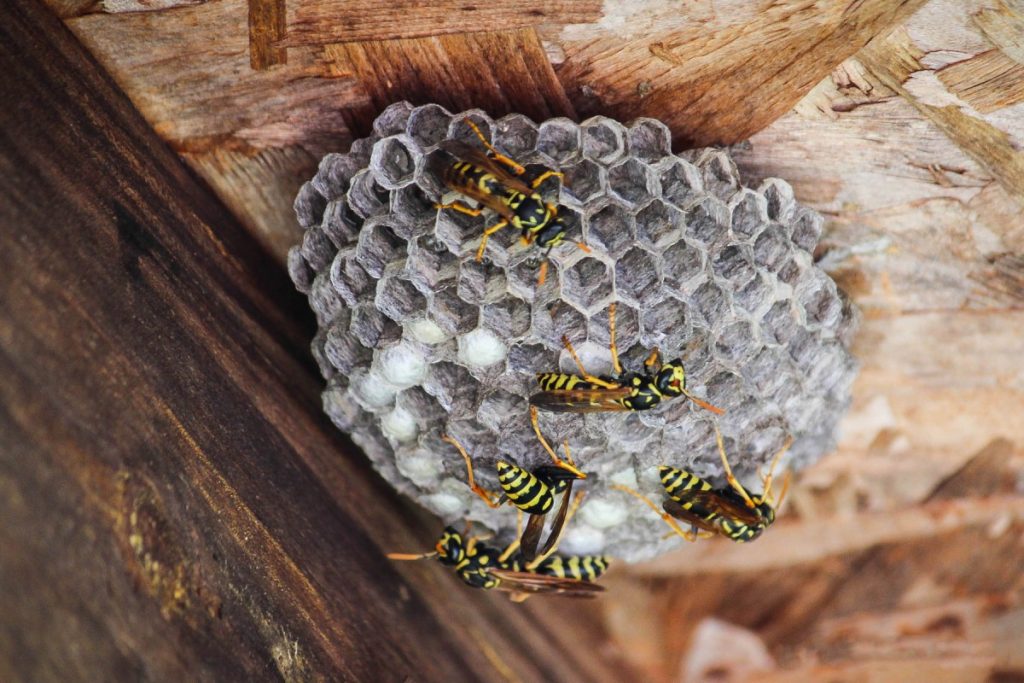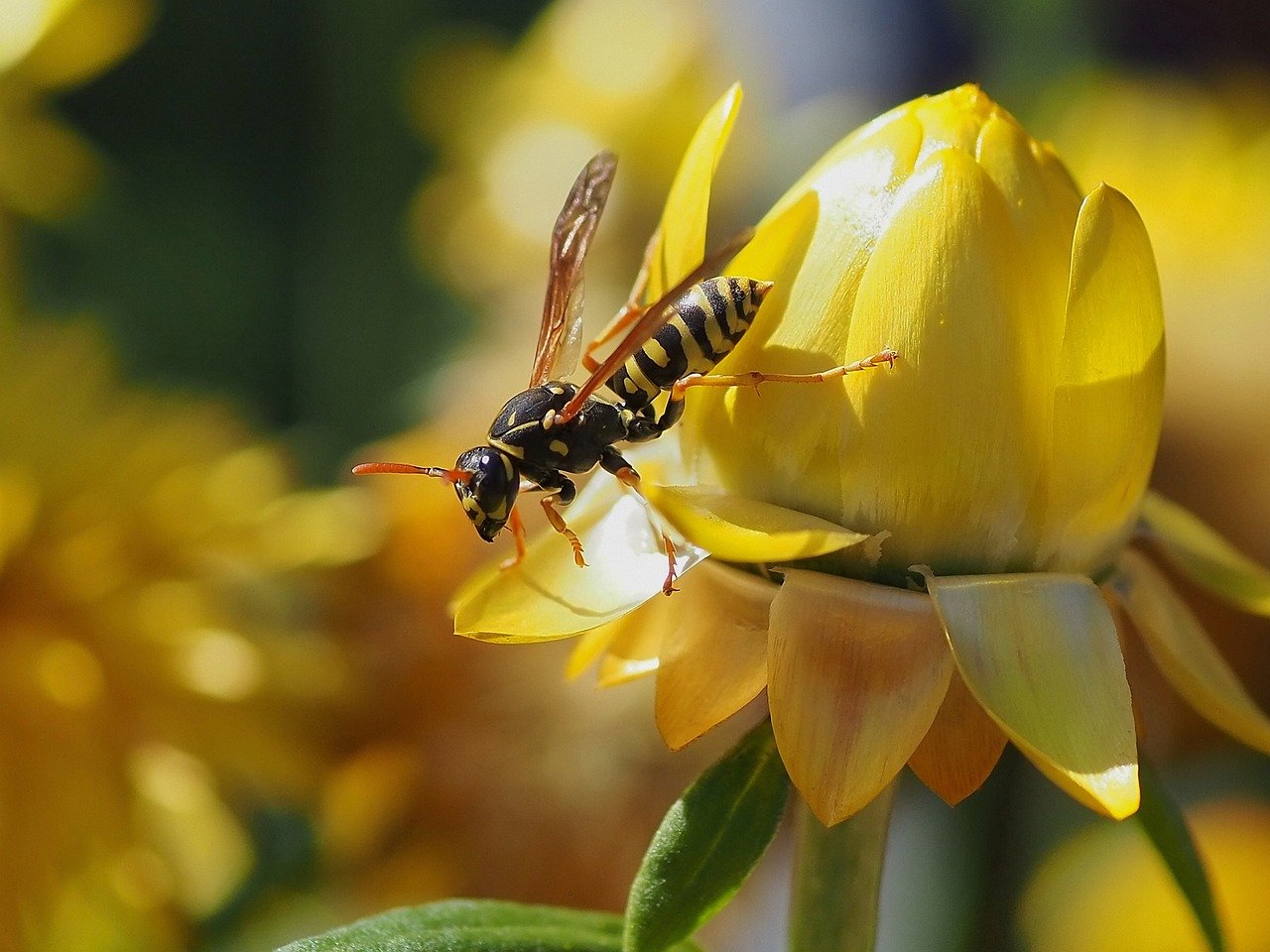Stinging insects like wasps and hornets often make themselves at home on your property. Their stingers can be dangerous to people. Unlike bees who can only sting once, wasps can sting multiple times. Some species of wasps are aggressive and sting without provocation, and others will only attack if their nest is threatened.
You can differentiate a wasp from a bee by noting its narrow waist and pair of wings. When threatened, it will raise its abdomen and use its stinger to inject venom into the attacker. Wasps usually live in large colonies and build nests out of paper or chewed-up leaves.


